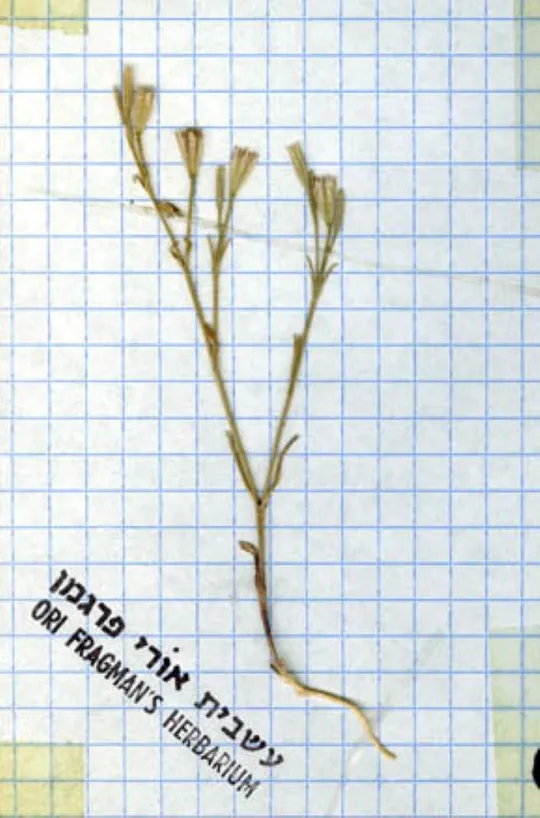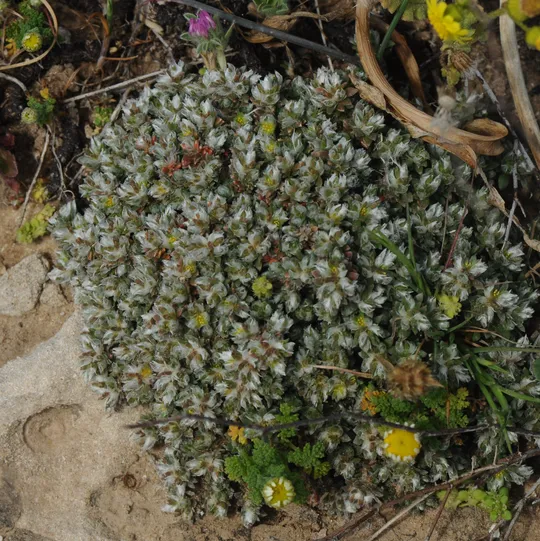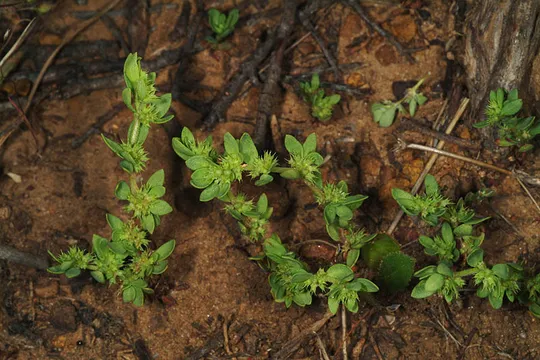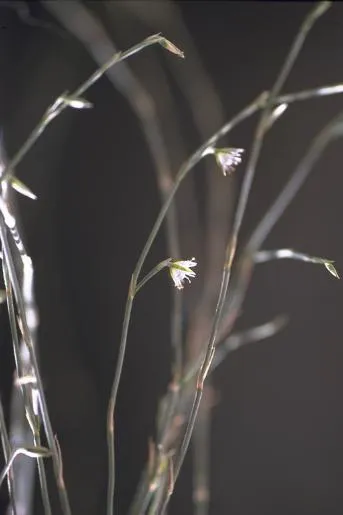Petrorhagia zoharyana
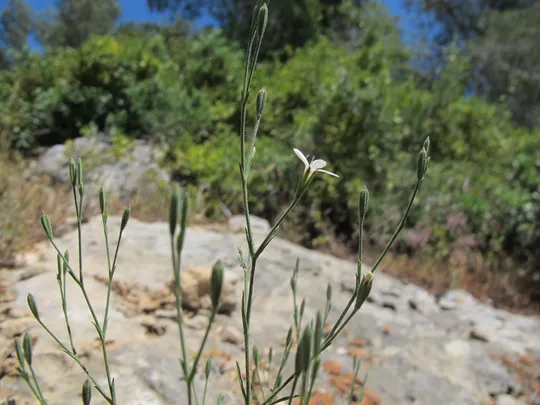
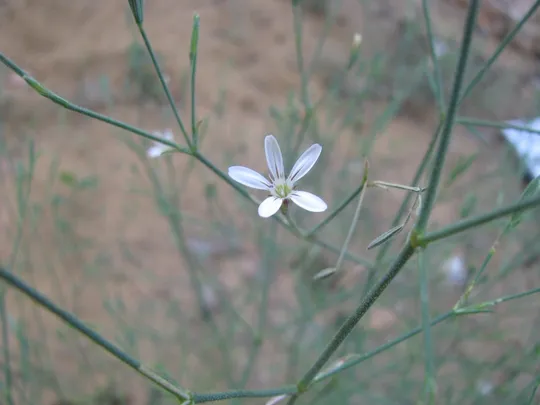
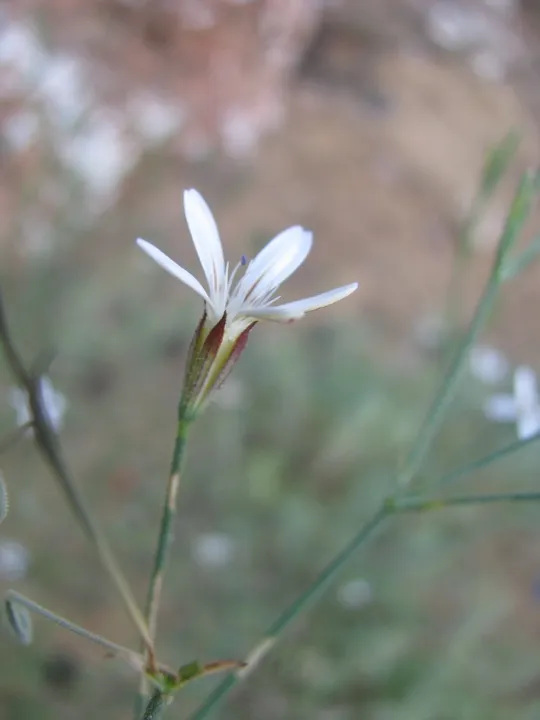
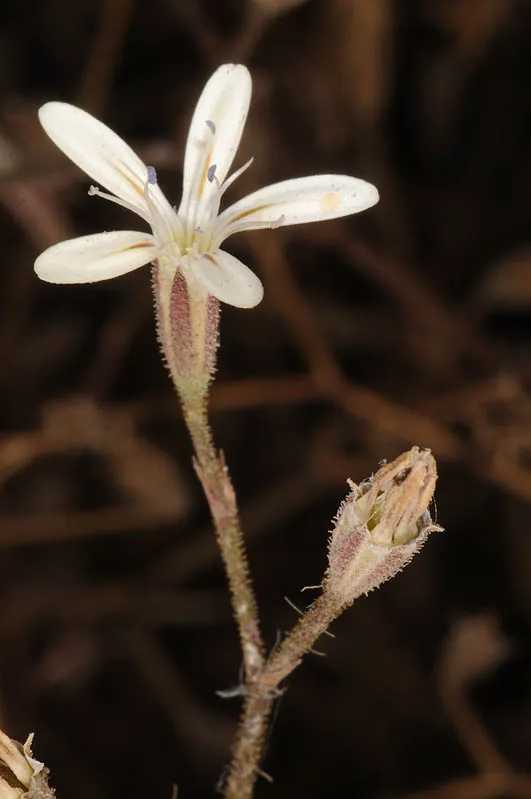
Petrorhagia zoharyana
grows in
eight regions
in Israel: the
northern Negev, Judean Desert, Samaria, and Samarian transition zone, the Jordan Valley, Gilboa, Lower
Galilee, Upper Galilee and the southern Golan Heights. In the northern Negev, it is extremely rare, and has only been found on
two sites on the Mishor Yamin sands. Even in the Judean Desert and the Jordan Valley, the plant is very rare
and found
only in
Wadi Qelt, Jericho and on the Jerusalem-Jericho Road. P. zoharyana is rare in the Samarian
transition zone and on
Mount Gilboa,
where the largest
populations were found. In this region, P. zoharyana spreads up the
mountains; it was collected on Mount Grizim and Mount Ebal. In the Upper Galilee it was
found on the eastern flanks of Mount Cna’an and Wadi Mahanayim, and in the Lower Galilee – in Wadi Og beneath Kokhav HaYarden and in the Amud Stream. In the southern Golan Heights P. zoharyana was collected in Wadi Metsar and
above Hamat Gader.
Rocky slopes in the transition zone where precipitation ranges
from 200-400 mm. Petrorhagia zoharyana usually grows on limestone substrates. It grows
mainly in the arid zone of the Mediterranean region: in the
Galilee it does not penetrate the rainy Mediterranean region,
but in Samaria it spreads up the mountains, where precipitation exceeds
400 mm.
The genus Petrorhagia has 28 species,
mainly annual species but also herbaceous perennials. Its distribution area includes
the Canary Islands, the entire Mediterranean Basin, Western and Central Europe
to the Baltic Sea and in the East, all the Middle East to Kashmir. The center
of diversity of the species is in the Mediterranean area. Until the 1980s, most
researchers referred to two taxa – P. zoharyana
and P.arabica
– as one species. Thus, in Post's Flora (1896, 1932) the distribution
of P.arabica continues north
to Jericho, Mount Gilboa, and Mount Grizim and up to Safed, but in fact these
plants were actually P. zoharyana. Prof. Zohary
was the first to realize that the populations in the Samarian transition zone belonged
to a different taxon than P.arabica,
but he mistakenly identified it as P.cretica.
Aaron Liston (1986) noted that the transition
zone batha taxon is not P.cretica,
and described the species as new to science, naming it P. zoharyana,
in honor of Michael Zohary. The description relies on the type species from Ein
Uja in Wadi Yitav, where the plant grows alongside
Retama raetam and Phlomis brachyodon on northern slopes. Interestingly,
whereas the geographic location of P. zoharyana
is between P.cretica
and P.arabica,
its morphological characters do not agree with such an intermediate situation.
• Petrorhagia
zoharyana grows in many (8) regions, but is common in
only three. In the other regions is grows on marginal sites apparently supported
by the source sites.
• The number of P. zoharyana sites is decreasing: until the 1980s, nine sites were
recorded, but it had previously been observed and collected in 11 sites. No
rare species survey has been conducted in its distribution area and there is no
reliable information on potential growth sites or on population sizes. There
are reports of large plant patches in Wadi Yeitav and the Ma’ale Gilboa area.
• P.
zoharyana is found in Wadi Yeitav and the Kokhav
HaShahar Nature Reserve, but the reserve status in the area it grows in is very
bad and subject to severe goat grazing pressure.
A thorough survey should be conducted of the nine
regions in which Petrorhagia zoharyana is found
and its distribution should be mapped. Two populations, one in
Wadi Uǧa above the spring (from where the species was first described), and the
second one in the Gilboa near Ma'ale Gilboa should be defined. The species
should be monitored and its seed bank examined in these locations.
Apart from Israel, Petrorhagia
zoharyanais known from Hauran (Jabal ad-Duruz) in southern Syria,
and from all the western regions of Jordan.
Petrorhagia zoharyana is an annual species, whose
red indicators are all low: it is not attractive, its habitat is not vulnerable
and it grows at several sites. However, its endemicity is significant, as the
species apparently represents a new endemism that developed in the transition
zone during the Holocene, probably not before the Middle Bronze Age. Although P. zoharyana
also grows in Jordan and southern Syria, most of its populations are found in
Israel, and only here, have particularly abundant populations been observed.
Liston, A. 1986, A New Species of Petrorhargia. Candollea 41, (1):
179-181.
Current Occupancy Map
| 1000 squre meter pixel | 5000 squre meter pixel | 10000 squre meter pixel | |
|---|---|---|---|
| number of observations | 0 | 0 | 0 |
| in total pixels | 0 | 0 | 0 |
| Family | Caryophyllaceae |
| Classification | On the endangered species list |
| Ecosystem | Semi-Steppe Belt |
| Chorotype | Eastern Mediterranean |
| Conservation Site | Wadi Yitav (Wadi Uǧa) above the spring |
| Rarity |
1
2
6
|
|---|---|
| Vulnerability |
0
0
4
|
| Attractiveness |
0
0
4
|
| Endemism |
0
3
4
|
| Red number |
1
3.2
10
|
| Peripherality | N |
| IUCN category | DD EW EX LC CR EN VU NT |
| Threat Definition according to the red book | Vulnerable |
 Based on:
Based on:
